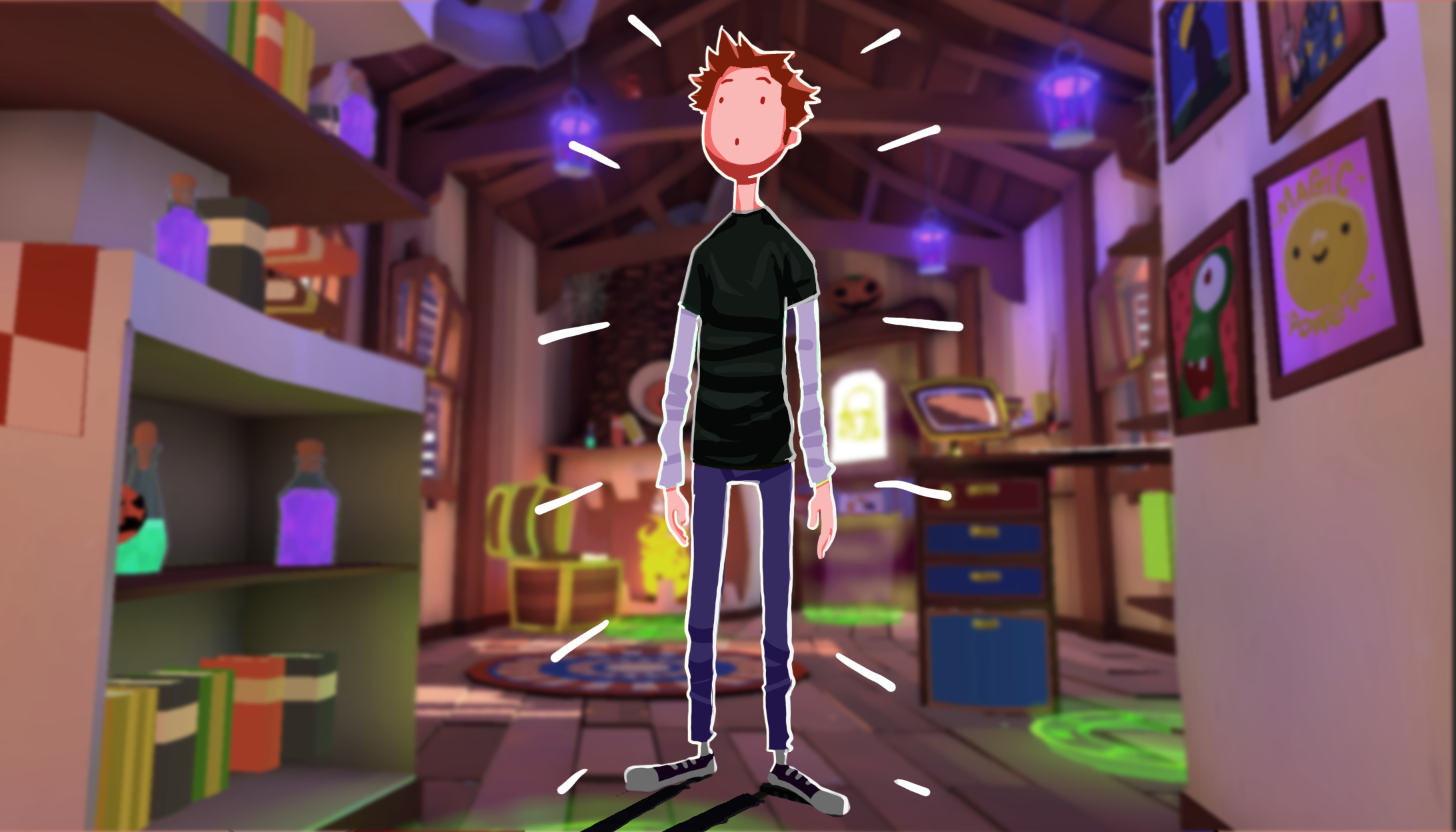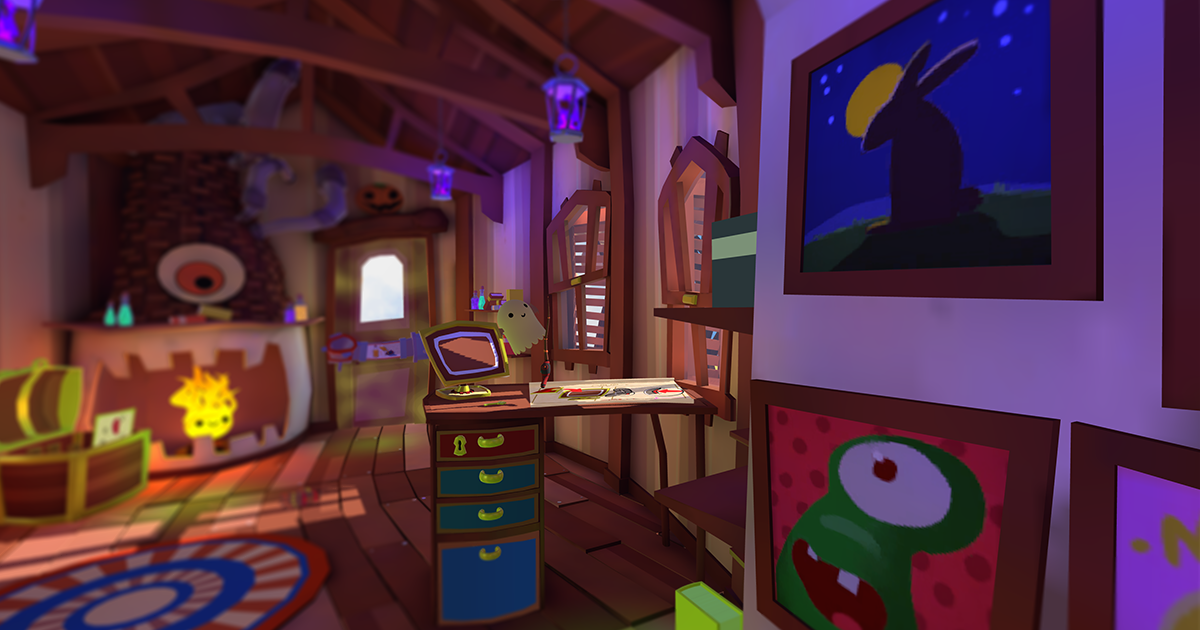Explore the Escape Room
Tutorial
·
Beginner
·
+10XP
·
45 mins
·
(376)
Unity Technologies

In this tutorial, you’ll:
- Explore the Escape Room VR experience
- Evaluate the player experience
- Find out more about the design process
- Generate ideas for a VR experience you would like to create
Languages available:
1. Overview
In this tutorial, you'll explore the immersive Escape Room VR experience designed for this learning project. You'll evaluate how the experience made you feel, learn more about the design process and consider the kind of experience you would like to make in VR.
2. Before you begin
In this tutorial, you’ll use the VR Beginner Unity Project and your VR hardware. Before you begin:
1. Open the VR Beginner Unity Project.
2. Check that your hardware is ready. If you’re using Oculus Link with the Oculus Quest, enable and connect this now through the Oculus app.
3. Explore the Escape Room
Before you find out more about how it was made, it's time to try out the Escape Room VR experience!

You'll find the information you need to escape in the room itself; the purpose of the experience is to escape using the information available to you.
Tips before you begin:
- Refer back to Review your VR controller for a reminder of the controls
- If something goes wrong and you want to reset the room, look at the watch on your right wrist
Once you've had a go on your own or with friends, you can move on to the next step for an overview of the escape process.
4. How to escape
If you need more guidance on how to escape the room, you can use the following process:
1. When you enter the room, pick up the key and open the desk drawer.
2. Remove the book from the drawer and place it on the lectern. This unlocks the teleporter system.
3. Teleport to the fireplace and find the potion recipe.
4. Teleport to the bookcase and collect your wand.
5. Teleport to the cauldron and unlock it with your wand.
6. Teleport to the worktable and collect the ingredients for the potion.
7. Add the potions to the cauldron and set it correctly.
8. Teleport to the front door and pour the potion into the lock mechanism.
9. Teleport outside of the unlocked door.
Here's a video of a streamlined play-through of the experience:
Note: Although this is the basic process to escape, there's plenty to explore along the way!
5. Evaluate your experience
Now that you've completed the Escape Room, let’s take a moment to evaluate the experience. It can be very helpful to reflect on interactive experiences, to connect how design choices related to your experience as a user.
If you'd like to explore this more, download the Escape Room evaluation grid. You can complete the grid or just use it to guide your evaluation. It includes examples to help you get started.
As you evaluate your experience, try to also consider:
- How your familiarity with VR influenced the experience
- How your external environment influenced the experience
6. Designing the Escape Room: Technical scoping
The Escape Room design process was an iterative and collaborative process involving a range of technical and artistic contributors experienced in fast prototyping.
The technical requirements for the VR experience included:
- Using the XR Interaction Toolkit as the basis for all interactions in the experience
- Showcasing common interactions in existing VR experiences, driven by physics, to demonstrate useful and familiar gameplay elements
- Demonstrating a range of visual effects in VR
- Including a dashboard so that players could try more mechanical interactions (this became the cauldron)
- Lightweight Assets which would run easily on the Oculus Quest, which is essentially a mobile device
7. Designing the Escape Room: Style and environment
The artistic team worked in close collaboration with technical scoping and gameplay design, to make sure that the experience felt engaging and cohesive. They knew from the start that the style had to work well with lightweight Assets, and that it had to invite players to engage with the world around them in VR.
The team established their requirements as:
- A simplistic low-poly art style with just a few textures, to convey an engaging world but maintain good performance and optimization
- Creating the majority of the shaders for the environment in Shader Graph, so they would be easily accessible to more advanced users who want to customize them
- Creating more complex effects with the VFX Graph, which the technical artist used to integrate effects (like the cauldron) into the Project
They also decided to set different lighting and shadow preferences for PC and mobile platforms, which meant limiting these effects on mobile wouldn’t affect the outcome of the PC build.
8. Designing the Escape Room: Gameplay
Important considerations for the gameplay design included:
- Integrating magic (with associated visual effects) into the environment and key gameplay moments, to immerse and engage players in the environment and experience
- Identifying the range of possible interactions and how they could be matched to both objects and the defined aesthetics
- Locating the major gameplay moments for escape at workstations around the environment, to encourage exploration but also to provide logical places for players to look for guidance if they were unsure what to do
- Balancing challenge (common in escape room activities) with an inviting and non-pressured environment
9. Challenge: Generate ideas for your own escape room
If you were going to make your own VR experience, what design choices would you make?
It can be really useful to identify the kind of experience you’re interested in creating, even if you don’t begin the design and development process. This can help you to decide how to continue your learning journey, and identify any areas you’re interested in exploring further.
If you'd like to explore this more, download the VR idea generation grid. You can complete the grid or just use it to guide your idea generation. It includes examples to help you get started.
As you think about the kind of experience you’d like to create, consider:
- Who would your target user or player be?
- What differences would a VR environment make to the experience compared to the real world?
- How will the aesthetic style you choose inform the experience?
10. Summary
In this tutorial, you have:
- Explore the Escape Room VR experience
- Evaluate the player experience
- Find out more about the design process
- Generated ideas for the type of escape experience you would like to design yourself
Next steps
If you’d like to explore VR design and development further, why not continue your learning journey?